Info
Subfamily: Panicoideae
Genus etymology: Cenchrus = "millet" [Greek]. However this is a misnomer, the only millet species in this genus is C. americanus, and this was treated as Pennisetum when Cenchrus was erected.
Species etymology: setigerus = "bristle bearing" [Latin] refering to the bristles subtending the florets
Photosynthetic type: C4 (warm season)
Nativity: naturalized - intentional
First recorded in Hawaiʻi: 1936
Map
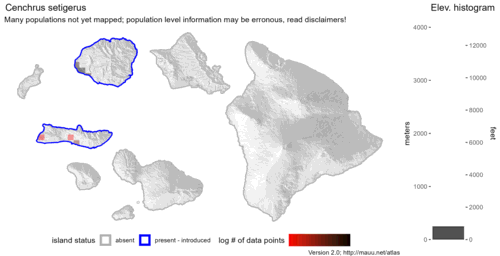
Inflorescence
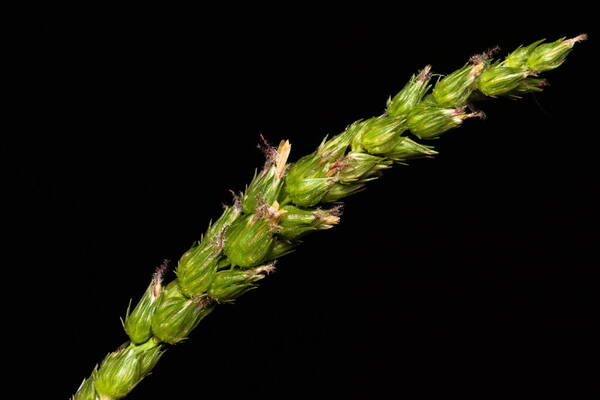
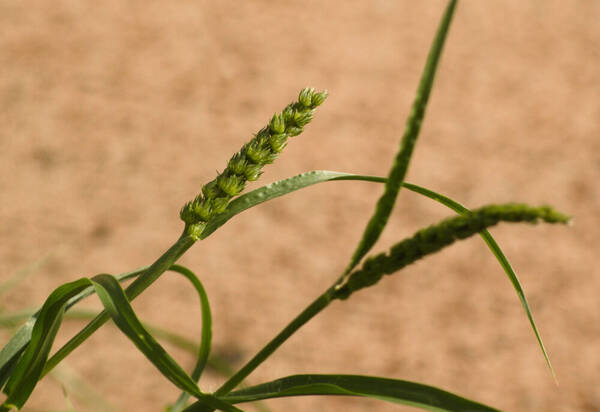
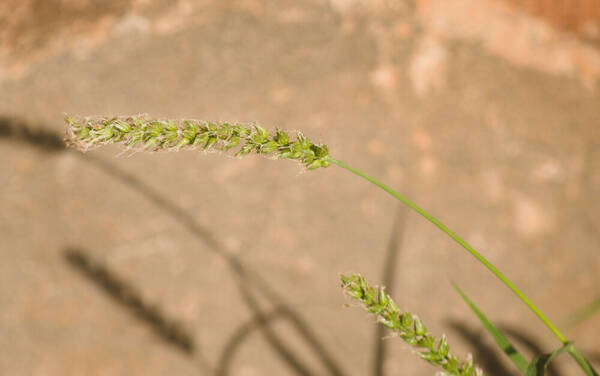
Plant
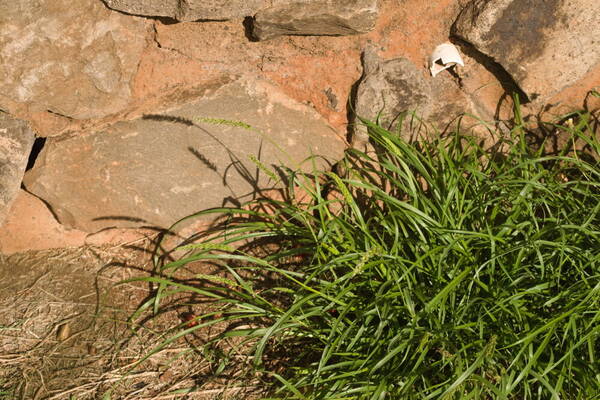
Habit
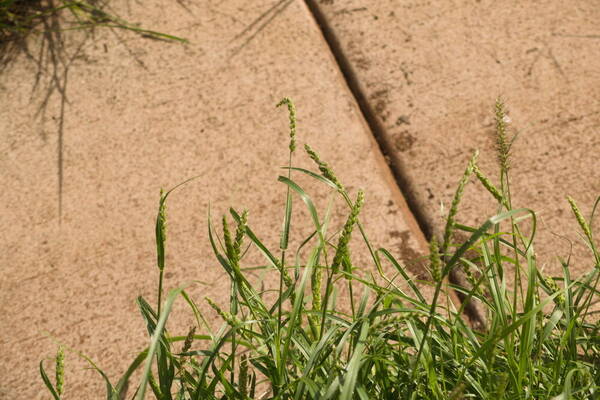
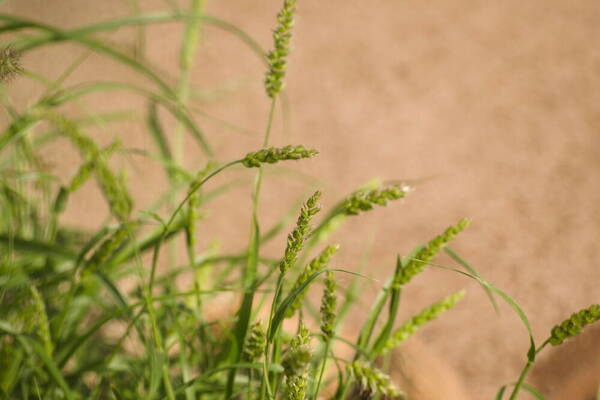
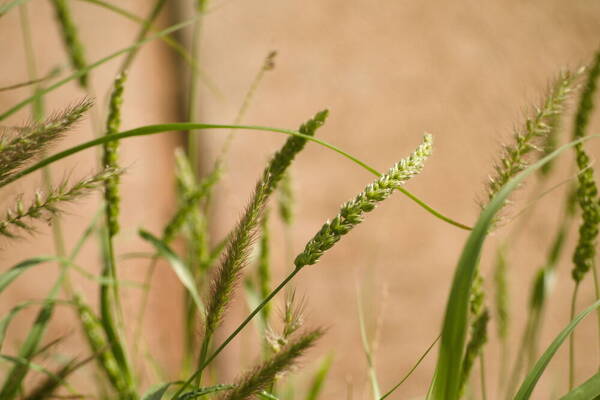
Spikelets
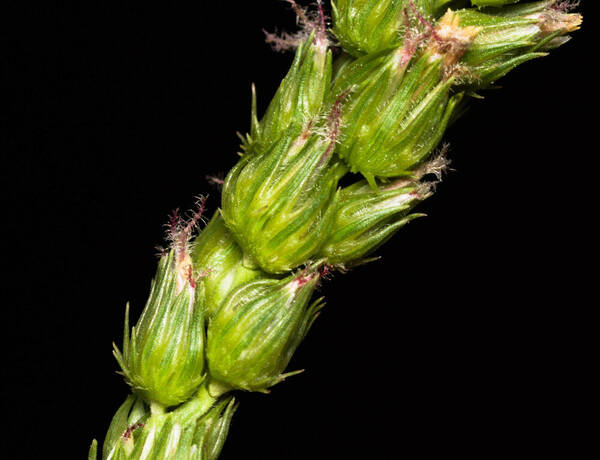
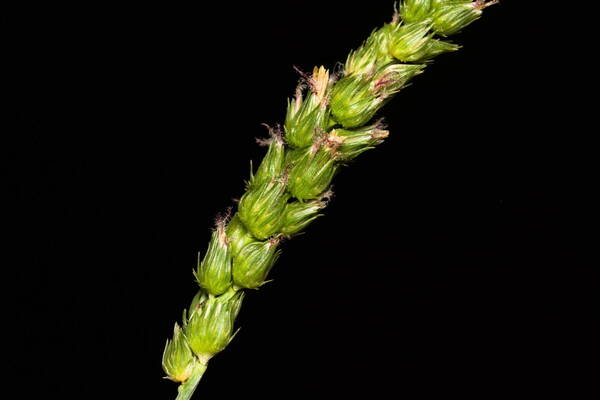
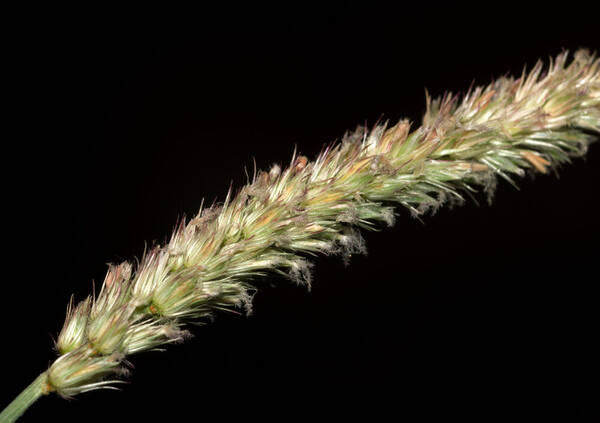
Description
Perennial, forming clumps from a ± bulbous base; culms 5–80 cm. high, geniculately ascending. Leaf-blades 2–20 cm. long, 2–7 mm. wide. Panicle 2–12 cm. long; involucres cup-shaped, 3–7 mm. long; inner spines short, flattened, connate for 1/4–1/2 their length to form a cup, glabrous or obscurely puberulous and grooved on the face, occasionally sparsely ciliate on the margins, green to dark purple, antrorsely scaberulous, narrowly triangular at the tip; outer spines few, short, often suppressed, rarely almost as long as the inner. Spikelets 1–3 per burr, 3–5 mm. long.
(Description source: Clayton, W.D. & Renvoize, S.A. 1982. Flora of Tropical East Africa. Gramineae (Part 3). A.A. Balkema, Rotterdam. 448 pp. )
Perennial, forming clumps from a ± bulbous base, up to 80 cm high; leaves flat, 2–7 mm wide. Panicle 2–12 cm long; involucre cup-shaped, 3–7 mm long; inner spines short, flattened, connate for 1/4–1/2 their length to form a cup, glabrous or obscurely puberulous; outer spines few, short, often suppressed, rarely almost as long as the inner. Spikelets 1–3 per burr, 3–5 mm long.
(Description source: Cope, T.A, (1995) Flora Somalia, Vol 4. Royal Botanical Gardens, Kew, London. 312 pp. )
Habit: Perennial; caespitose. Butt sheaths thickened and forming a bulb. Culms geniculately ascending; 5-80 cm long. Ligule a fringe of hairs. Leaf-blades 2-20 cm long; 2-7 mm wide. Inflorescences: Inflorescence a panicle. Panicle spiciform; linear; 2-12 cm long. Primary panicle branches accrescent to a central axis; with sessile scars on axis. Panicle axis angular; bearing deciduous spikelet clusters. Spikelets subtended by an involucre. Fertile spikelets sessile; 1-3 in the cluster. Involucre composed of bristles; connate into a cup below; with 1-3 mm connate; oblate; 3-7 mm long; base obconical. Involucral bristles deciduous with the fertile spikelets; in one whorl, or with an outer whorl of thinner bristles; inner bristles longer than outer; with longest bristle scarcely emergent; 2-4 mm long; flattened; grooved on the face; rigid; antrorsely scaberulous; glabrous, or pubescent, or ciliate; obtuse, or spinose. Spikelets: Spikelets comprising 1 basal sterile florets; 1 fertile florets; without rhachilla extension. Spikelets ovate; dorsally compressed; acuminate; 3-5 mm long; falling entire; deciduous with accessory branch structures. Fertile Spikelets: Spikelets comprising 1 basal sterile florets; 1 fertile florets; without rhachilla extension. Spikelets ovate; dorsally compressed; acuminate; 3-5 mm long; falling entire; deciduous with accessory branch structures. Glumes: Glumes shorter than spikelet; thinner than fertile lemma. Lower glume ovate; 1.5-2 mm long; 0.5 length of spikelet; hyaline; without keels; 1 -veined. Lower glume lateral veins absent. Lower glume surface puberulous. Lower glume apex obtuse, or acute. Upper glume ovate; 2 mm long; 0.5-0.66 length of spikelet; hyaline; without keels; 1 -veined. Upper glume lateral veins absent. Upper glume surface puberulous. Upper glume apex obtuse, or acute. Florets: Basal sterile florets barren; with palea. Lemma of lower sterile floret oblong; 1 length of spikelet; membranous; 5 -veined; puberulous; emarginate; mucronate. Fertile lemma ovate; 3-5 mm long; chartaceous, or coriaceous; much thinner on margins; without keel; 5-7 -veined. Lemma margins flat. Lemma apex truncate, or obtuse; mucronate. Palea chartaceous, or coriaceous. Flowers: Lodicules absent. Anthers 3; 2 mm long. Fruits: Caryopsis with adherent pericarp; oblong; dorsally compressed; 1.5 mm long; truncate. Distribution: Africa: north, west tropical, northeast tropical, and east tropical. Asia-temperate: western Asia, Arabia, and China. Asia-tropical: India and Indo-China. Australasia: Australia. Pacific: north-central. South America: Brazil.
(Description source: Clayton, W.D., Vorontsova, M.S., Harman, K.T. and Williamson, H. (2006 onwards). GrassBase - The Online World Grass Flora. Available at https://powo.science.kew.org )